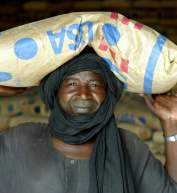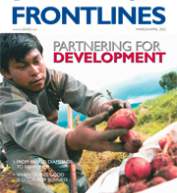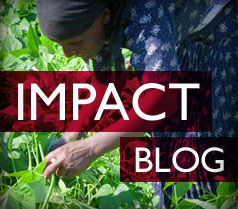- Agriculture and Food Security
- Democracy, Human Rights and Governance
- Economic Growth and Trade
- Education
- Environment and Global Climate Change
- Frontiers in Development
- Gender Equality and Women's Empowerment
- Global Health
- Science, Technology and Innovation
- Water and Sanitation
- Working in Crises and Conflict
Conflict Mitigation and Prevention
Violent conflict and instability affect at least 50 countries and 1.5 billion people worldwide.
Many of the causes of violence, extremism and instability – such as deteriorating economies, weak or illegitimate political institutions, and competition over natural resources – are central concerns of aid.
Our stakes in these countries are high. No conflict-affected country is on track to achieve a single Millennium Development Goal by the 2015 target. In fact, countries affected by major violence between 1981 and 2005 saw a 10% increase in the number of people living on less than $1.25 per day. Conflict spreads across borders, and state failure can breed chaos and allow transnational crime and terrorism to flourish.
USAID funds programs and activities that work to mitigate and manage the causes and consequences of violent conflict, instability and extremism. We bridge learning with action by formulating policy, such as The Development Response to Violent Extremism and Insurgency (PDF), as well as guidance on program design, monitoring and evaluation.
- In countries experiencing political crises, demonstrating signs of fragility or emerging from conflict, USAID provides conflict assessments and generates analyses on potential drivers of resiliencies to withstand conflict.
- USAID produces an annual iteration of its country rankings by fragility and risk of instability, and offers the interagency field-relevant, cutting-edge research into the drivers of conflict and violent extremism.
- USAID works with other donors and fragile states themselves to develop approaches for improving aid in these areas. This cooperation has led to important advances such as the development of tracking tools to monitor the complexities of conflict affected states specifically.
Since 2002, USAID has:
- Conducted more than 60 conflict assessments in approximately 50 countries, with up to six more planned through the end of 2012.
- Published seven annual Alerts Lists and more than 14 Conflict Toolkits, focusing on issues such as land tenure, women, and religion.
- Trained over 500 government, interagency and non-government partners in the necessary tools to design programs and ensure a peacebuilding approach in conflict-affected environments.
Development assistance needs new ways of thinking about conflict and how aid in these contexts can be planned and implemented. That is why USAID gives priority attention to conflict mitigation and management.








Comment
Make a general inquiry or suggest an improvement.